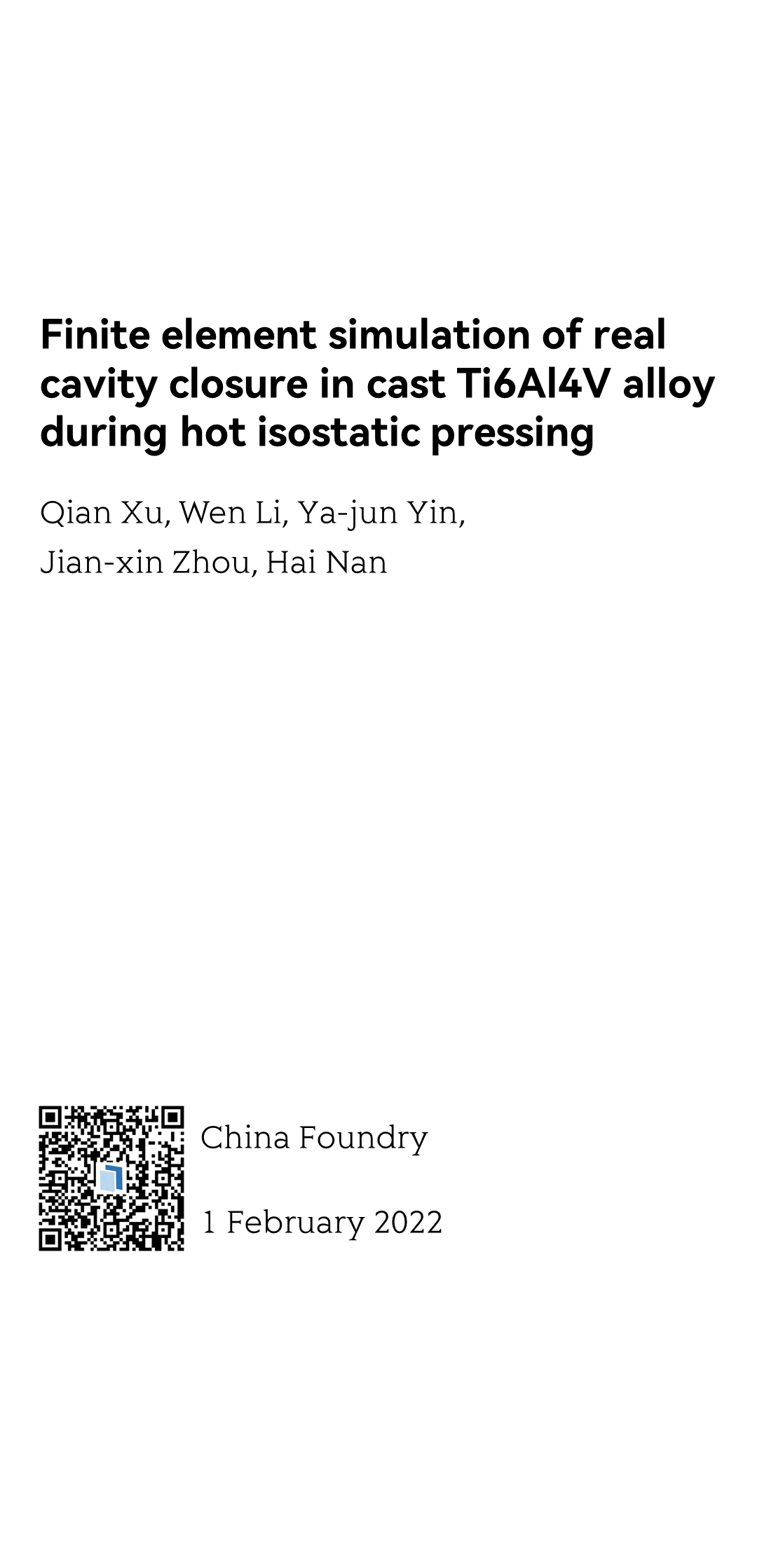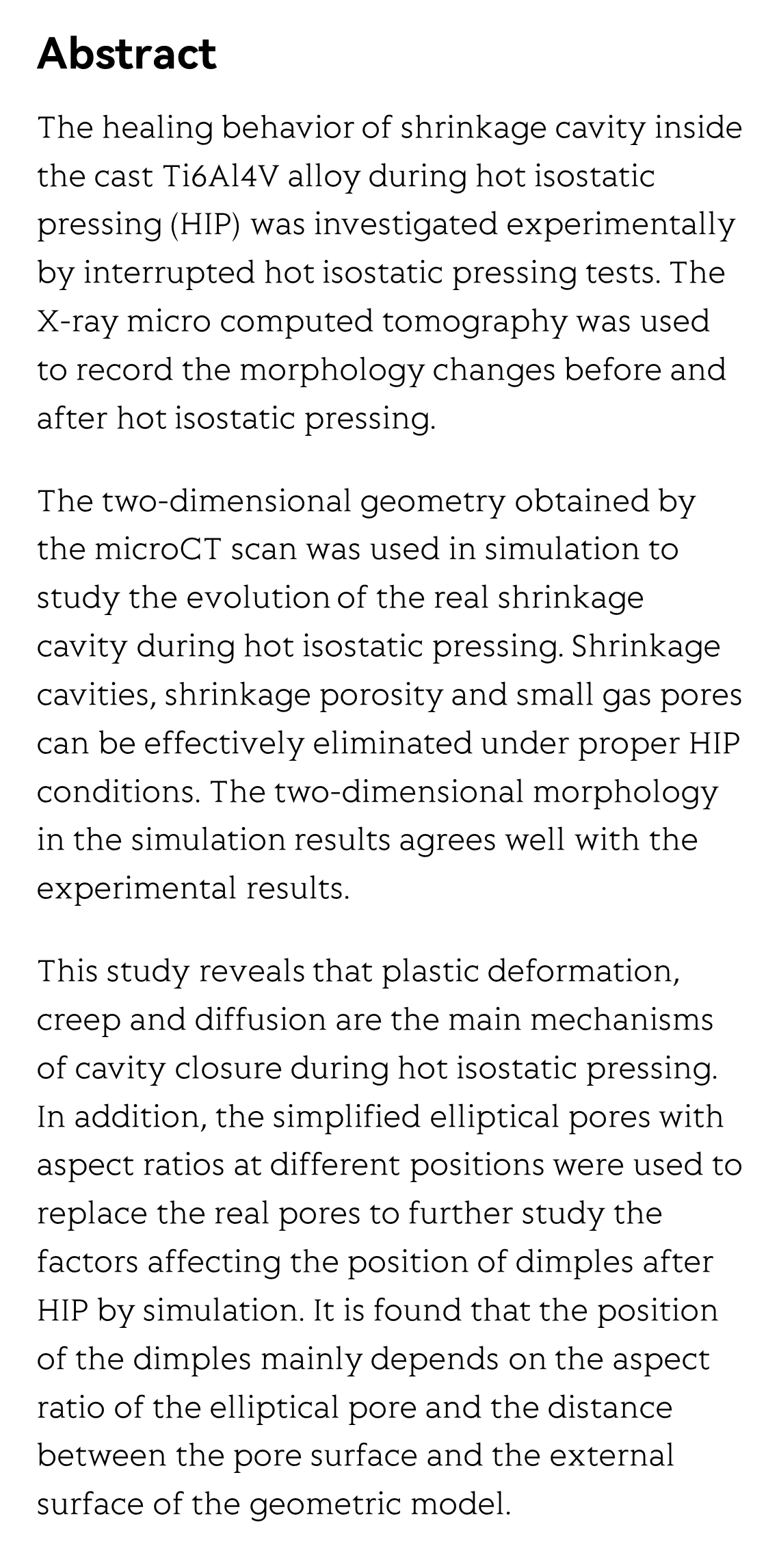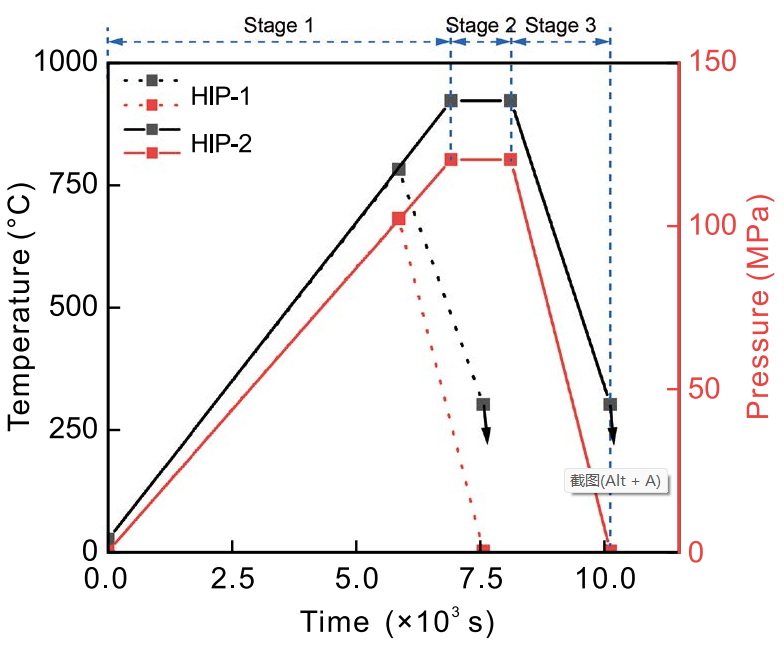(Peer-Reviewed) Finite element simulation of real cavity closure in cast Ti6Al4V alloy during hot isostatic pressing
Qian Xu 徐倩 ¹, Wen Li 李文 ¹, Ya-jun Yin 殷亚军 ¹, Jian-xin Zhou 周建新 ¹, Hai Nan 南海 ²
¹ State Key Laboratory of Materials Processing and Die and Mould Technology, Huazhong University of Science and Technology, Wuhan, 430074, China
中国 武汉 华中科技大学材料成形与模具技术国家重点实验室
² AECC Beijing Institute of Aeronautical Materials, Beijing, 100095, China
中国 北京 中国航发北京航空材料研究院
Abstract
The healing behavior of shrinkage cavity inside the cast Ti6Al4V alloy during hot isostatic pressing (HIP) was investigated experimentally by interrupted hot isostatic pressing tests. The X-ray micro computed tomography was used to record the morphology changes before and after hot isostatic pressing.
The two-dimensional geometry obtained by the microCT scan was used in simulation to study the evolution of the real shrinkage cavity during hot isostatic pressing. Shrinkage cavities, shrinkage porosity and small gas pores can be effectively eliminated under proper HIP conditions. The two-dimensional morphology in the simulation results agrees well with the experimental results.
This study reveals that plastic deformation, creep and diffusion are the main mechanisms of cavity closure during hot isostatic pressing. In addition, the simplified elliptical pores with aspect ratios at different positions were used to replace the real pores to further study the factors affecting the position of dimples after HIP by simulation. It is found that the position of the dimples mainly depends on the aspect ratio of the elliptical pore and the distance between the pore surface and the external surface of the geometric model.
Flicker minimization in power-saving displays enabled by measurement of difference in flexoelectric coefficients and displacement-current in positive dielectric anisotropy liquid crystals
Junho Jung, HaYoung Jung, GyuRi Choi, HanByeol Park, Sun-Mi Park, Ki-Sun Kwon, Heui-Seok Jin, Dong-Jin Lee, Hoon Jeong, JeongKi Park, Byeong Koo Kim, Seung Hee Lee, MinSu Kim
Opto-Electronic Advances
2025-09-25
Dual-frequency angular-multiplexed fringe projection profilometry with deep learning: breaking hardware limits for ultra-high-speed 3D imaging
Wenwu Chen, Yifan Liu, Shijie Feng, Wei Yin, Jiaming Qian, Yixuan Li, Hang Zhang, Maciej Trusiak, Malgorzata Kujawinska, Qian Chen, Chao Zuo
Opto-Electronic Advances
2025-09-25





